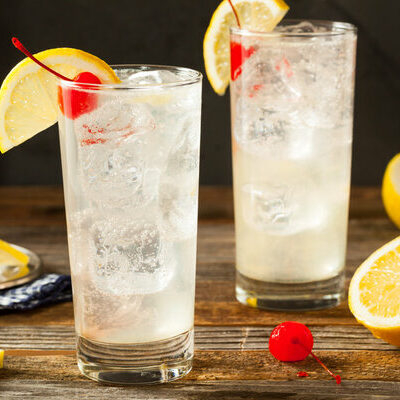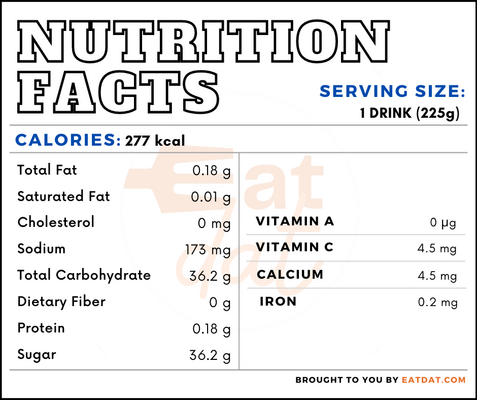
Tom Collins
What is a Tom Collins?
In this cocktail, gin is the base spirit. It is one of the first of the Collins cocktails to have been created.
- The drink is white in color and has a sweet and zesty taste due to the presence of the lemon, with herbal notes from the gin.
- The name of the cocktail may refer to the original Old Tom gin used and the last name of the bartender.
Some members of the Collins family of cocktails include:
- Tom Collins
- Ron Collins
- John Collins
- Michael Collins
- Phil Collins
- Bootsy Collins
Origin of tom collins
This cocktail is a massive hoax from 1874 in the US. One man would approach another and ask whether he had seen Tom Collins. The second one would reply that they don’t know the person. Then, the first would inform him that he is saying nasty things about the second man, who would then stomp off to look for Tom Collins – who didn’t exist! The joke became very popular and a part of popular culture. The story goes that a bartender decided to create this cocktail and name it Tom Collins. Anyone who entered his bar demanding Tom Collins would get the drink instead. The drink was first documented in Jerry Thomas’s How to Mix Drinks in 1876.
Nutrition
Nutritional profile for Tom Collins (1 drink/225g):

This cocktail is rich in vitamin C, potassium, and phosphorus. However, gin has no nutritional value and without any vitamins and minerals, has empty calories. There are seven calories in every gram of alcohol. Furthermore, the acid content in sparkling water can cause tooth decay.
Lemons and lemon juice, by extension, have very few calories but are chock full of nutrition. A single lemon can provide 30 mg of vitamin C. Lemon juice contains plenty of different flavonoids and phenolic compounds, which are powerful antioxidants. Also, it contains decent levels of calcium, iron, phosphorus, potassium, selenium, folate, choline, vitamin A, lutein, and zeaxanthin, all of which are essential for good health.
Nonetheless, overconsumption of this alcoholic beverage can result in a change in the brain’s functioning patterns, liver cirrhosis, pancreatitis, heart problems, strokes, different types of cancers, as well as affect overall immunity. It should be consumed responsibly and in moderation.
Commercial production
Tom Collins premix is readily available in the market. However, to prepare a classic Tom Collins, the ingredients required are gin, sugar, and lemon juice. First, these ingredients are combined in a glass with ice and stirred well. Then, the carbonated water is poured in last. Finally, this drink is served in a Collins glass, named after the cocktail itself.
Tom collins recipes
This cocktail is quite versatile and lends itself to variations. Here are a few recipes to try:
- Classic Tom Collins
- Blackberry Tom Collins
- Comrade Collins
- Strawberry Collins
- John Collins
- Rhubarb Tom Collins
- Cucumber Collins
- Peach Collins
- Arnold Palmer
- Huckleberry Tom Collins
- Juan Collins
FDA regulations
Alcohol is regulated by the TTB in the US. Gin is classified as a distilled spirit with its main flavor being derived from juniper berries and at least a 40 percent ABV. Moreover, the FDA defines lemon juice as the unfermented juice obtained from ripe lemons from which seeds and excess pulp are removed. The acidity of concentrated lemon juice must not exceed 15 percent of the acidity of the finished food.
Sparkling bottled water is defined as water that contains the same amount of carbon dioxide from the source that it had at the emergence from the source after treatment and possible replacement of carbon dioxide. In addition, sugar (sucrose sugar, cane sugar, beet sugar) is defined as is the chemical [beta]-D-fructofuranosyl-[alpha]-D-glucopyranoside and is obtained by crystallization from sugar cane or sugar beet juice that has been extracted by pressing or diffusion, then clarified and evaporated. It is supposed to be in pure form for consumption.
References
Megan Willett, The Weird, Historic Tale Of How The Tom Collins Cocktail Got Its Name, Business Insider India, https://www.businessinsider.in/home/the-weird-historic-tale-of-how-the-tom-collins-cocktail-got-its-name/articleshow/21132441.cms
Klimek-Szczykutowicz, Marta et al. “Citrus limon (Lemon) Phenomenon-A Review of the Chemistry, Pharmacological Properties, Applications in the Modern Pharmaceutical, Food, and Cosmetics Industries, and Biotechnological Studies.” Plants (Basel, Switzerland) vol. 9,1 119. 17 Jan. 2020, doi:10.3390/plants9010119, https://www.ncbi.nlm.nih.gov/pmc/articles/PMC7020168/
Carol Galbicsek, Effects of Alcohol, Alcohol Rehab Guide, https://www.alcoholrehabguide.org/alcohol/effects/
